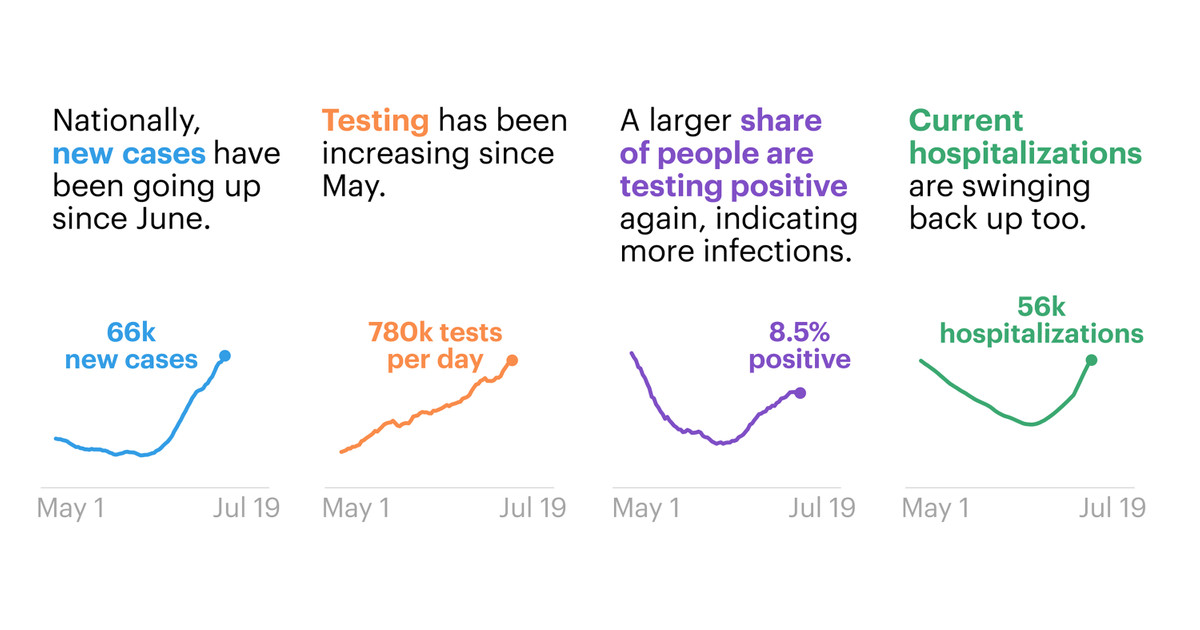jeff1234
Registered
- Joined
- Mar 25, 2012
- Messages
- 1,102
- Likes
- 798
Today the Guardian took a look at where we are with the pandemic and what the future looks like. The authors are an infectious diseases professor and a writer/documentary film maker.
Their assessment of the pandemic to date has (IMHO) the ring of truth so I've quoted it below.
However their prescriptions don't ring true. They don't consider the impact of the lockdowns that they recommend, on families, businesses, schools.
And while they say that the virus will always be with us and that we must accept the fact that an effective vaccine may not be available for awhile or ever, they recommend an intense lockdown until a strong system of rapid testing and contact tracing are available even though the chances of this ever happening maybe more remote than a vaccine.
https://www.theguardian.com/commentisfree/2020/aug/04/coronavirus-pandemic-wave-wildfire
Their assessment of the pandemic to date has (IMHO) the ring of truth so I've quoted it below.
However their prescriptions don't ring true. They don't consider the impact of the lockdowns that they recommend, on families, businesses, schools.
And while they say that the virus will always be with us and that we must accept the fact that an effective vaccine may not be available for awhile or ever, they recommend an intense lockdown until a strong system of rapid testing and contact tracing are available even though the chances of this ever happening maybe more remote than a vaccine.
https://www.theguardian.com/commentisfree/2020/aug/04/coronavirus-pandemic-wave-wildfire
- These pandemics are often described in terms of “waves” and “troughs”. We have now seen enough to replace the ocean analogy with a better one: wildfire.
- Like a wildfire, the virus relentlessly seeks out fuel (human hosts), devastating some areas while sparing others. It will continue spreading until we achieve sufficient herd immunity – when 50 to 70% of the population has developed protective antibodies. No amount of official happy talk will change that
- We now have compelling evidence that Sars-CoV-2 is not affected by seasonality or regional weather; it spreads by the human contact and mixing that occurs in areas of high population density. .
- We don’t yet know whether immunity is permanent or short-lived. We also don’t know if a vaccine, if and when we develop one, will be a bull’s-eye success like the vaccines for polio or measles, or more of a hope-for-the-best agent like seasonal flu vaccine. We hope vaccine development efforts will prove effective, but hope is not a strategy.
- Like HIV, Sars-Cov-2 is here to stay, and realism must inform our strategic response.
- Studies of previous pandemics, wars and other times of intense national stress show that people react most calmly and effectively when leadership tells them the truth, even if that truth is frightening. If you don’t have answers, say so; tell the public what you’re doing to learn more. So far, the United States has largely seen the opposite approach: moving-target messaging that is often scientifically erroneous, irrationally optimistic and leaves the public in desperate confusion over who and what to believe, with science the first casualty.
- In the coming months, US morbidity and mortality will largely depend on how much fuel the Covid-19 wildfire has access to. While a full, Wuhan-style lockdown is impractical, we need to get as close as we can in hotspots of dangerously increasing case counts, suspending all but strictly essential services, to get transmission down to a manageable level. This is an extremely delicate balancing act, since so many functions are necessary to keep society going. Yet areas that observed tight shelter-in-place constraints, like New York and some countries in Asia and Europe, showed that we can bring the deadly numbers down and bring back the economy in a safer public environment.
- Unfortunately, the US has often been far too optimistic and cavalier: at the first signs of effectiveness against Covid-19, we exhaled and concluded that we were “over the hump”, even when the case count exceeded 20,000 a day. We told ourselves that the curve had been flattened and business as usual could resume. The grim statistics, however, speak for themselves. We must bring the infection rate down to a level where testing results are rapid enough that follow-up tracing can actually identify contacts in time to halt further transmission. Since the virus made landfall we have failed to do so.
- We know that strategic lockdown causes great economic and social pain, and we must be prepared to continue taking care of those who suffer as a result, whatever the price. There are no foolproof or easy answers, and even nations that were initially successful in containment are facing renewed spread as their economies reopen.But of one thing we can be certain: the cost of not acting will far exceed the cost of our second chance to get this right. And we may not have the luxury of a third.


